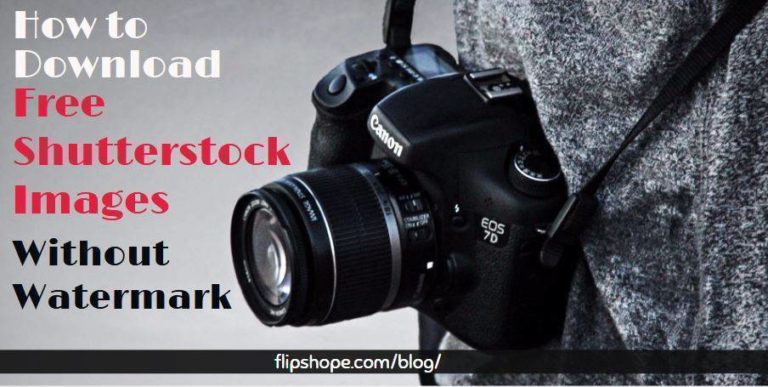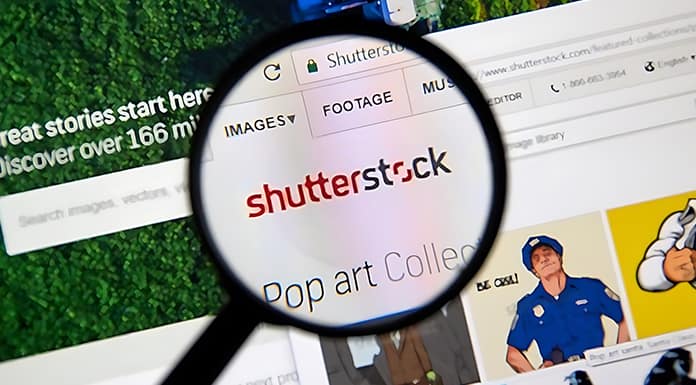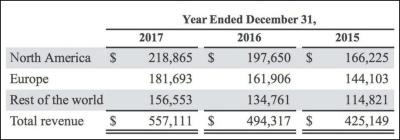If you’re someone who loves creating content, whether it’s for your blog, social media, or a personal project, you’ve probably come across Shutterstock—one of the go-to platforms for high-quality images. But here’s the thing: Shutterstock operates on a licensing model that requires payment to legally use their images. When you purchase a license, you’re essentially paying for the rights to use that image in a specific way, whether for commercial or personal use. Understanding how licensing works is key to staying within legal boundaries and making the most of the images you love. It’s not just about grabbing a picture—it’s about respecting the creators and the platform’s rules.
Understanding the Risks of Downloading Shutterstock Images Without Payment

Now, let’s be real—there’s often a temptation to download images without paying, especially when you’re on a tight budget or in a hurry. However, doing so can lead to serious consequences. First and foremost, it’s illegal. Shutterstock’s images are protected by copyright law, and unauthorized use can result in hefty fines, legal action, or both. Think of it like stealing; just because you can get away with it doesn’t make it right or safe. Beyond legal risks, there are ethical concerns. Creators invest time and effort into making beautiful images, and using their work without permission undermines their livelihood. Plus, many websites and platforms have sophisticated mechanisms to detect unauthorized downloads, which can lead to account suspensions or bans. So, while it might seem like a quick fix, downloading Shutterstock images without paying is a gamble that’s not worth it in the long run. Instead, exploring legitimate options can help you access quality images without the risk.
Legal Alternatives to Access Shutterstock Images for Free

Let’s be real—there’s always a bit of a temptation to find quick ways to get those high-quality Shutterstock images without spending a dime. But it’s super important to stick to legal methods to respect creators’ rights and avoid any trouble down the line. Luckily, there are some legit ways to access stunning images without breaking the bank or getting into legal hot water.
First up, many photographers and artists share their work under Creative Commons licenses. These licenses often allow you to use images for free, as long as you give proper attribution and follow the license terms. Websites like Creative Commons Search or Flickr’s Creative Commons section are great places to start. Just make sure to double-check the license type—some might require attribution, while others could restrict commercial use.
Another excellent option is to look for public domain images. These are works whose copyrights have expired or been waived, making them free for anyone to use. Resources like Public Domain Pictures and Pixabay offer a treasure trove of images that you can use freely without worrying about licensing issues.
Additionally, some stock photo platforms offer a selection of free images. For example:
- Unsplash: High-resolution photos shared by talented photographers, free for personal and commercial use.
- Pexels: A vast library of free stock photos and videos, with no attribution required in most cases.
- Pixabay: Over 1.7 million free images, videos, and music—all royalty-free.
These sources are perfect for anyone looking to stay within legal boundaries while still getting access to beautiful, professional-looking images. Just remember to always verify the licensing details before using an image, especially if it’s for commercial purposes.
Using Free Stock Image Websites as Alternatives

If you’re tired of trying to find ways to sneak around paid images, the good news is that there are plenty of fantastic free stock image websites that can be your go-to sources. These sites give you access to a wide variety of high-quality photos, illustrations, and graphics—no strings attached. Plus, they’re 100% legal and often very easy to use.
Let’s take a quick tour of some of the best free stock image websites:
| Website | Highlights | Usage Notes |
|---|---|---|
| Unsplash | Stunning, high-res photos from photographers around the world | No attribution needed, but appreciated |
| Pexels | Vast collection of photos and videos, user-friendly interface | Free for personal and commercial use |
| Pixabay | Huge library of images, videos, and music | All content is released under Creative Commons CC0 |
| Burst | High-quality images tailored for entrepreneurs and small businesses | Free for commercial use, no attribution required |
Using these sites is straightforward—simply search for what you need, download the images, and incorporate them into your projects. They’re especially handy if you’re working on a budget or just want to avoid any legal hassle. Plus, since these images are often contributed by talented creators, you’re getting access to unique visuals that might not be available on paid platforms.
One thing to keep in mind: even though these images are free, respecting the licensing terms is always good practice. For most of these sites, you can use the images for free in both personal and commercial projects without attribution, but it’s worth checking just to be safe.
In summary, whether you’re looking for legal ways to access Shutterstock images for free or want to explore alternative free stock sites, there are plenty of options out there. The key is to use reputable sources and always double-check the licensing. That way, you stay on the right side of the law and get beautiful visuals for your projects—no cost and no stress.
How to Find Free Shutterstock Images Through Official Channels
Many people assume that all high-quality images on Shutterstock come with a price tag, but did you know there are legitimate ways to access some of these images for free? Shutterstock offers official channels where you can find free images that are legally available for download and use. Let’s explore how you can tap into these resources without risking copyright issues.
Shutterstock Free Collection
Shutterstock has a dedicated section called the Free Collection. This is a curated library of high-quality images that Shutterstock provides at no cost. These images are typically updated regularly and cover a wide range of topics, from nature and technology to business and lifestyle.
To access these images:
- Visit the Shutterstock Free Collection page.
- Browse through the images or use the search bar to find something specific.
- Click on an image to see the download options.
- Ensure you read the licensing terms—they’re usually free for personal or commercial use, but some images may have restrictions.
Shutterstock Blog and Promotions
Shutterstock often runs promotions, contests, or offers free downloads as part of their marketing campaigns. Keep an eye on their official blog and social media channels for announcements about free image downloads. Sometimes, they offer free image packs during special events or holidays.
Using Shutterstock’s Free Image Widget and Embeds
Another official channel is their embed feature, which allows you to embed Shutterstock images directly onto websites or presentations. These images are free to use under specific embed licensing terms, which typically restrict modification but allow display on your platform.
In summary, always stick to Shutterstock’s official channels for free images. This way, you’ll stay within legal boundaries and respect the creators’ rights, even when you’re not paying. It’s a great way to access high-quality visuals without any worries about copyright infringement!
Tips for Creating Your Own Images to Avoid Licensing Issues
If you want to truly avoid licensing headaches and have full control over your visuals, creating your own images is the way to go. Not only does this save you money in the long run, but it also adds a personal touch to your projects. Here are some practical tips to get you started on creating your own images that look professional and are free of licensing worries.
Invest in Basic Equipment
You don’t need fancy gear to start. A decent smartphone with a good camera can do wonders. If you’re serious, consider investing in a DSLR or mirrorless camera for higher quality shots. Good lighting, a clean background, and stability are key elements, so use natural light whenever possible and invest in a tripod if you can.
Learn Composition and Lighting
Understanding the basics of photography makes a huge difference. Focus on framing your subject well, using the rule of thirds, and paying attention to lighting. Natural light often provides the best results, but you can also experiment with artificial lighting setups. Plenty of free tutorials online can help you hone these skills.
Use Free and Paid Editing Tools
Post-processing is essential for professional-looking images. Tools like Canva, GIMP, or Adobe Photoshop Express allow you to tweak colors, crop images, remove backgrounds, and add text. These enhancements can elevate your photos from good to great.
Capture Unique Content
Think about what makes your project special. Instead of relying on generic stock photos, take photos of your products, surroundings, or concepts relevant to your niche. This adds originality and authenticity, making your content stand out.
Respect Privacy and Copyright Laws
Always get permission if you’re photographing people, private property, or trademarks. Use model releases when needed, and be aware of copyright restrictions on certain locations or objects. When in doubt, create images that don’t infringe on others’ rights.
Creating your own images might take a little more effort upfront, but it pays off in the long run. You’ll have unique visuals that perfectly match your brand or message, and you’ll avoid licensing issues entirely. Plus, honing your photography skills can be a fun and rewarding journey!
Conclusion and Best Practices for Using Stock Images Legally
Incorporating stock images into your projects can significantly enhance visual appeal, but it’s essential to do so ethically and legally. To avoid potential copyright issues, always use images from reputable sources like Shutterstock, and ensure you have the proper licensing or permission. Remember, using images without appropriate rights can lead to legal complications and damage your reputation.
Here are some best practices to keep in mind:
- Always verify licensing terms: Read the license agreement carefully to understand the permitted uses.
- Use free or royalty-free images responsibly: Even free images may have restrictions; adhere to the specified guidelines.
- Attribute when required: Some images require attribution; provide credit as specified by the license.
- Keep records of licenses: Save proof of licensing or permissions for future reference.
- Consider creating custom images: When possible, use original photos or graphics to ensure uniqueness and full rights.
By following these best practices, you can ethically incorporate stock images into your content, protect yourself legally, and maintain your credibility. Remember, respecting intellectual property rights not only keeps you compliant but also supports creators who produce valuable visual content.


